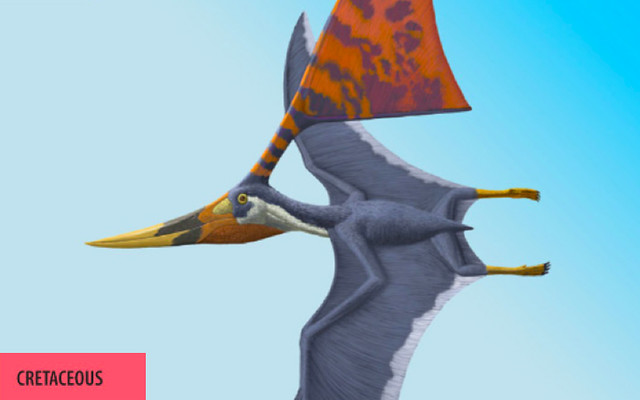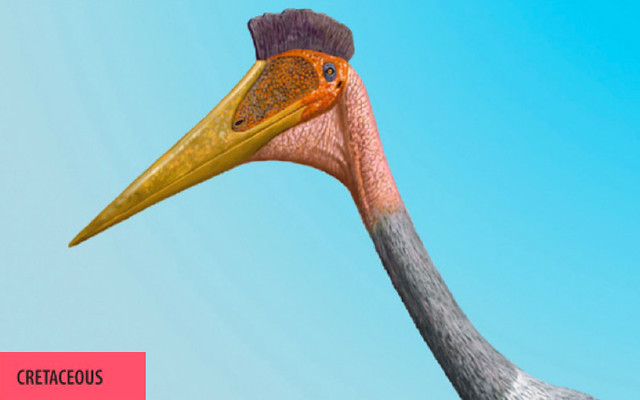AMNH Pterosaur Starter Deck
2014 – (See Cards | Deck Info | Download | Purchase)…
This deck uses images and information from the vast collections of the American Museum of Natural History in New York City, especially the 2014 special exhibition Pterosaurs: Flight in the Age of Dinosaurs. The game consists of 38 different cards, includes “extinct” organisms, and utilizes a simplified version of the game to compensate for unavailable facts.

Nyctosaurus gracilis
Nyctosaurus gracilis


EXTINCT | 4 POINTS
Play: FLIGHT of 1.
Nyctosaurus means “night lizard.” It has been found in the Niobrara Formation of the mid-western United States. Nyctosaurus possessed an extraordinarily large antler like crest, which is surprising given how small the pterosaur was.

Tapejara wellnhoferi
Tapejara wellnhoferi


EXTINCT | 4 POINTS
Play: FLIGHT of 1.
Tapejara means “old being” and has been found in Northeast Brazil. The tip of its lower jaw is turned downward. It may have been a fruit eater, or skimmed the surface of the ocean for fish.

Quetzalcoatlus northropi
Quetzalcoatlus northropi


EXTINCT | 7 POINTS
Play: FLIGHT of 3.
Named after both the Aztec air god Quetzalcoatl and the Northrop Corporation, this Texan pterosaur had a wingspan of roughly 33 feet (the size of a 2 person airplane) and a height of 16-18 feet!

Dimorphodon macronyx
Dimorphodon macronyx


EXTINCT | 5 POINTS
Play: FLIGHT of 2.
Dimorphodon macronyx was discovered near Lyme Regis, England, on what is now called the Jurassic Coast. Dimorphodon means “two-form tooth,” which refers to its two distinct types of teeth. Macronyx refers to its large claws.

Pteranodon longiceps
Pteranodon longiceps


EXTINCT | 5 POINTS
Play: FLIGHT of 2.
Pteranodon is one of the most famous pterosaurs, having appeared in movies such as King Kong. Its name means “wing without tooth” and its fossils have been found in Western Kansas. Scientists think it may have dived for fish.

Tupuxuara leonardii
Tupuxuara leonardii


EXTINCT | 5 POINTS
Play: FLIGHT of 2.
Tupuxuara means “long crested” and has been found along ancient South American coasts. Scientists are not sure if they ate fruit or fish.